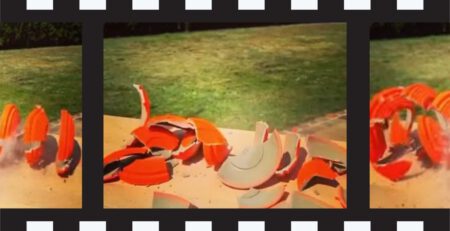HOW SCORING IN CLAY TARGET SHOOTING COMPETITIONS WORKS
Like any other Olympic discipline, the scores in clay target shooting competitions are regulated by the corresponding international federation.
When it comes to the Olympic disciplines of clay target shooting (Skeet, Trap and Double Trap), the ISSF (International Shooting Sport Federation) is responsible for setting the rules on scores and classification through the Technical Regulations for Clay Target Shooting.
In today’s article, we’re going to go over all the theory behind scoring so that you can refer to this post whenever you need it.
We hope it helps!
SCORING AND CLASSIFICATION PROCEDURE IN CLAY TARGET SHOOTING
To start with, the ISSF will appoint a member of the classification jury as the Chief of Referees, who will be responsible for ensuring that the scoring procedures are followed and who will run the Classification Office, which will be responsible for the following:
- Before the competition, prepare the scorecard for each squad and ensure that each scorecard is with the right squad on the right range.
- After each heat, receive and review the broken targets totals, verify the results, and post them on the scoreboard.
- At the end of all the day’s competitions, the Chief will total the official results in the shortest possible time, preparing a notice for the press, team officials, jury and technical delegates.
Scoring is done officially on each range for each round of 25 targets in Trap and
Skeet or 15 doubles in Double Trap events.
Individual scoring will be carried out on each court by two Assistant Referees. One of them will record the results on a permanent official scorecard and the other will record the results on a manual or electronic scoreboard.
SCOREBOARDS
As mentioned, the referees may enter the scores on a manual or electronic scoreboard.
For ranges with manual scoreboards, three Assistant Referees must be appointed, each task with using their individual scoreboard to keep track of the scores called by the Referee. They will be positioned as follows:
- The first person must be positioned at the side of the firing line to function to maintain a permanent official scorecard.
- The second person will maintain a manual scoreboard.
- The third person must be positioned at the rear of the firing line to maintain a permanent official scorecard and also to check that the scores shown on the manual scoreboard are registered correctly
At the conclusion of each round the results must be compared and the correct
scores entered upon the official scorecard before it is delivered to the Classification
Office.
On ranges with electronic scoreboards, the Referee will control the scoreboards and two Assistant Referees will be appointed and positioned as follows:
- The first person must be positioned at the side of the firing line to function as an Assistant Referee and maintain a permanent official scorecard.
- The second person must be positioned at the other side of the firing line to function as an Assistant Referee, also maintaining an official scorecard.
MISTAKES IN ELECTRONIC SCOREBOARDS
If at any stage the visible scoreboard should display an incorrect score, the Referee must immediately stop the shooting and with minimum delay take whatever action is required to correct it.
If, for any reason, it is not possible to correct the display, the following action will be taken:
- The official scoreboard must be examined and verified up to the point where the electronic scoreboard failed.
- Then, if it is possible to quickly substitute a manual scoreboard, enter the scores upon it up to the point of failure and continue the round.
- If it is not possible to substitute a manual scoreboard, an additional scorecard must be introduced, the verified scores entered upon it and the round must then continue with the second scorecard under the control of a qualified person appointed by the Chief of Referees.
- In the event that there is a difference in the recorded scores between the two (2) scorecards, that which is under the control of the official appointed by the Chief of Referees, must prevail.
Finally, at the end of the round, the individual results will be compared and announced aloud. If the athlete agrees, the athlete and the referee will sign the scorecard.
COMPETITION RESULTS
In individual events, the results of each round must be recorded legibly on official scorecards and the total of the Qualification rounds, the Final and any Shoot-offs must be recorded, and the scores ranked in descending order.
In team events, the cores of each team member must be recorded, and the number of all targets hit by the team members of each team in each of the Qualification Rounds must be totaled and the team’s scores ranked in descending order.
HOW TIES ARE HANDLED IN AN OLYMPIC CLAY TARGET SHOOTING COMPETITION
When it comes to tie-breaks, we have to start by talking about the “count back rule”.
Any ties to be broken by this method must be decided as follows:
- The scores of the last round of 25 targets (Double Trap 15 Doubles) must be compared.
- The winner is the athlete with the highest score in that round.
- In a case where the tie is still not broken, the round before last must be compared and if still not broken, the round before that and so on.
- If the results of all the rounds are still equal, ties must be decided by counting backward, target by target, from the last target of the last round (and if necessary, the next to the last round etc.) until a tie-breaking zero (0) is found.
That said, some competitions have finals while others do not.
For competitions with a final, ties shall be handled as follows:
- If two or more athletes are tied for a place in the final, their qualification ranking and places in the final must be decided by a shoot-off in accordance with the rules for Trap or Skeet.
- The starting positions in the shoot-off will be decided by the interim qualification ranking (the highest ranking athlete to shoot first).
- In case of a tie that cannot be broken by the count back rule, the shooting order in the shoot-off shall be determined by drawing lots.
- In case of more than one shoot-off, the higher position shoot-off(s) must be shot first.
- If the shoot-off result of the athletes qualifying for the Final is the same, those athletes must continue to shoot-off until the tie is broken, to establish their qualification ranking.
- In case of an absolute tie, the tied athletes will share the same ranking, with their names listed in alphabetical order according to their family names.
For competitions without a final, ties shall be handled as follows:
- Ties with a perfect score will not be broken, but will share first place with the names listed in order according to the Latin alphabet (family names).
- If there are ties for the first three (3) places, starting positions will be decided by the interim qualification ranking.
- When several athletes are tied for more than one (1) ranking place, they will all shoot-off on the same range to determine the individual ranking.
- Tied scores ranking in 4th place and below must be ranked according to the count back rule
Lastly, for team ties, rankings must be decided by the combined score of the team members in the last round of targets, then by the next to the last round, etc. until the tie is broken.
If the tie is not broken (i.e., all the combined scores of the team members are the same, in all rounds) then ties must be decided by counting backward, from the combined score of the team members of the last target of the last round (and if necessary, the next to the last target or the next to the last round etc.). The team with the lower combined score of the last target will be given the lower ranking.
We hope that we’ve cleared up any questions you might have had about classifications and scores at clay target shooting competitions in this article.
To keep learning a bit more about our sport, check out the articles on our blog.
We’d love for you to give them a read and let us know what you think in the comments!












